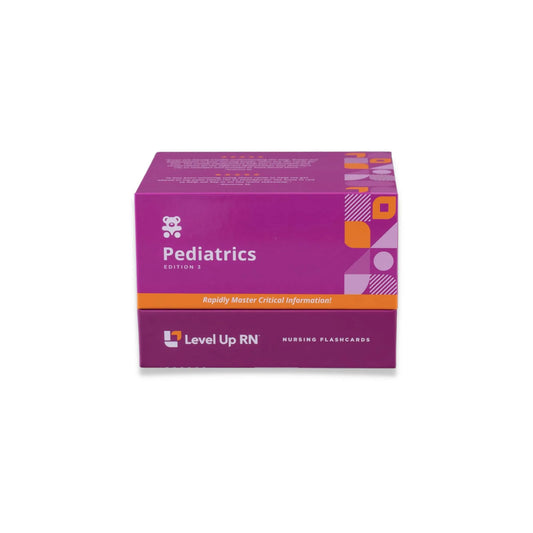Hi, I'm Cathy with Level Up RN. In this video, I'm going to continue my coverage of childhood cancers from our pediatric nursing flashcards. Specifically, I'll be talking about testicular cancer as well as osteosarcoma. So if you have our flashcards, go ahead and pull them out so you can follow along with me. And at the end of the video, I'm going to give you guys a little quiz to test your understanding of some of the key points I'll be covering. So definitely stay tuned for that.
Let's first talk about testicular cancer, which is the most common malignancy in men between the ages of 15 and 45. So testicular cancer originates in the germ cells, which are the cells that produce sperm. And it becomes invasive after hormonal changes occur during puberty. Key risk factors for testicular cancer include cryptorchidism, which is an undescended testicle, as well as a family history of testicular cancer. And then testicular cancer is more common in White males. The most common symptom of testicular cancer is a painless lump or swelling in the testicle. Diagnosis includes the use of an ultrasound as well as blood work to check for the presence of tumor markers, which are proteins that are produced by the cancerous cells. Treatment includes the surgical removal of the testicle, which is a radical orchiectomy, as well as chemotherapy and radiation. And then, of note, testicular cancer has a very high survival rate. In terms of patient teaching, you should advise your patient to consider banking sperm, as there will be an increased risk for infertility. And then you should also reinforce the importance of performing monthly testicular self-exams. These self-exams tend to work best in the shower because the warm water helps to relax the skin of the scrotum, which makes it easier to examine the testicle.
Let's now talk about osteosarcoma, which is the most common type of pediatric bone cancer. So this type of cancer typically occurs at the end of a long bone in the arm or leg. So common sites include the lower part of the femur or upper part of the tibia. The risk for osteosarcoma is greatest during teenage growth spurts. It is more common in African Americans as well as Hispanic individuals. And signs and symptoms include bone pain as well as swelling in the area, fractures, a limp when walking, and decreased range of motion. Diagnosis of osteosarcoma includes imaging, such as an x-ray, MRI, and/or CT scan, and then a biopsy would provide definitive diagnosis. Treatment includes chemotherapy, radiation, as well as surgery. One type of surgery that I would definitely be familiar with is a limb salvage surgery. This is where the tumor is removed, and the limb is reconstructed using an internal prosthetic device. However, depending on the spread of the cancer, amputation of the limb may be necessary.
All right. It's quiz time, and I've got three questions for you.
Question number 1, testicular cancer usually causes severe unilateral testicular pain, true or false?
The answer is false. Testicular cancer typically does not cause severe pain. It is usually painless.
Question number 2, surgical removal of the testicle is called a blank.
The answer is a radical orchiectomy.
Question number 3, treatment of osteosarcoma that involves surgical removal of the tumor and reconstruction of the limb with a prosthesis is called a blank surgery.
The answer is limb salvage.
All right. That's it for this video. I hope it was helpful. Take care and good luck with studying.


